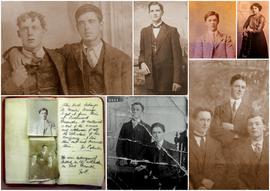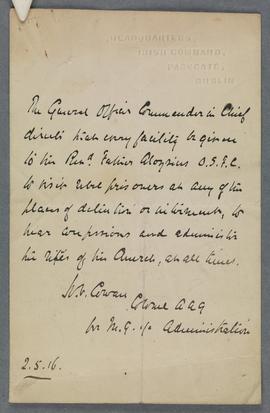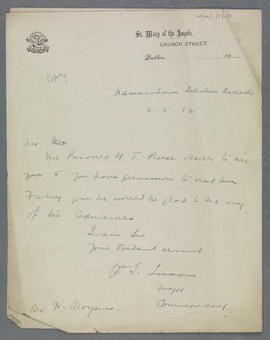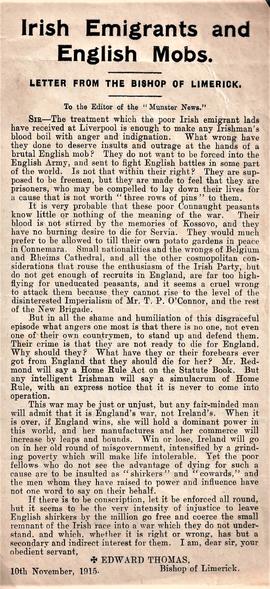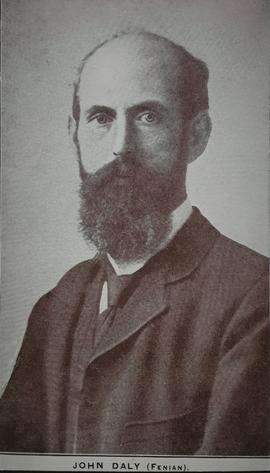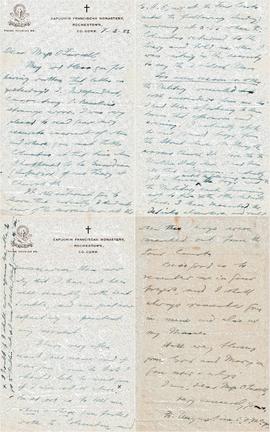Notebook belonging to Martin Savage, Irish Volunteer
- IE CA IR-1/2/5
- Dossier
- 1916
Fait partie de Irish Capuchin Archives
Notebook belonging to Martin Savage, Irish Volunteer. The annotation on the first page reads: ‘This book belongs to Martin Savage. I [Fr. Columbus Murphy OFM Cap.] got it from him at Richmond Barracks. It contained a list of the names and addresses of all the Volunteers of his company. I tore them out and burned them. Fr. Columbus’. A later note reads: ‘He [Savage] was subsequently killed in the attack on Lord French. Fr. C.’. The notebook also contains thirteen black and white portrait photographs of unidentified individuals and groups. Three of these photographs can be positively identified as Martin Savage. The other photographs may be of his relations. Some of the photographs have a printed company stamp on the reverse: ‘The Franco Art Co., Grafton Studios, 111 Grafton St. … Dublin’.

